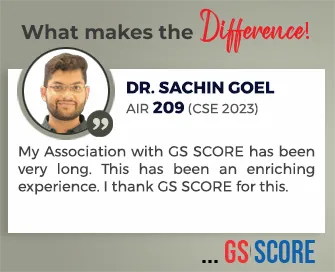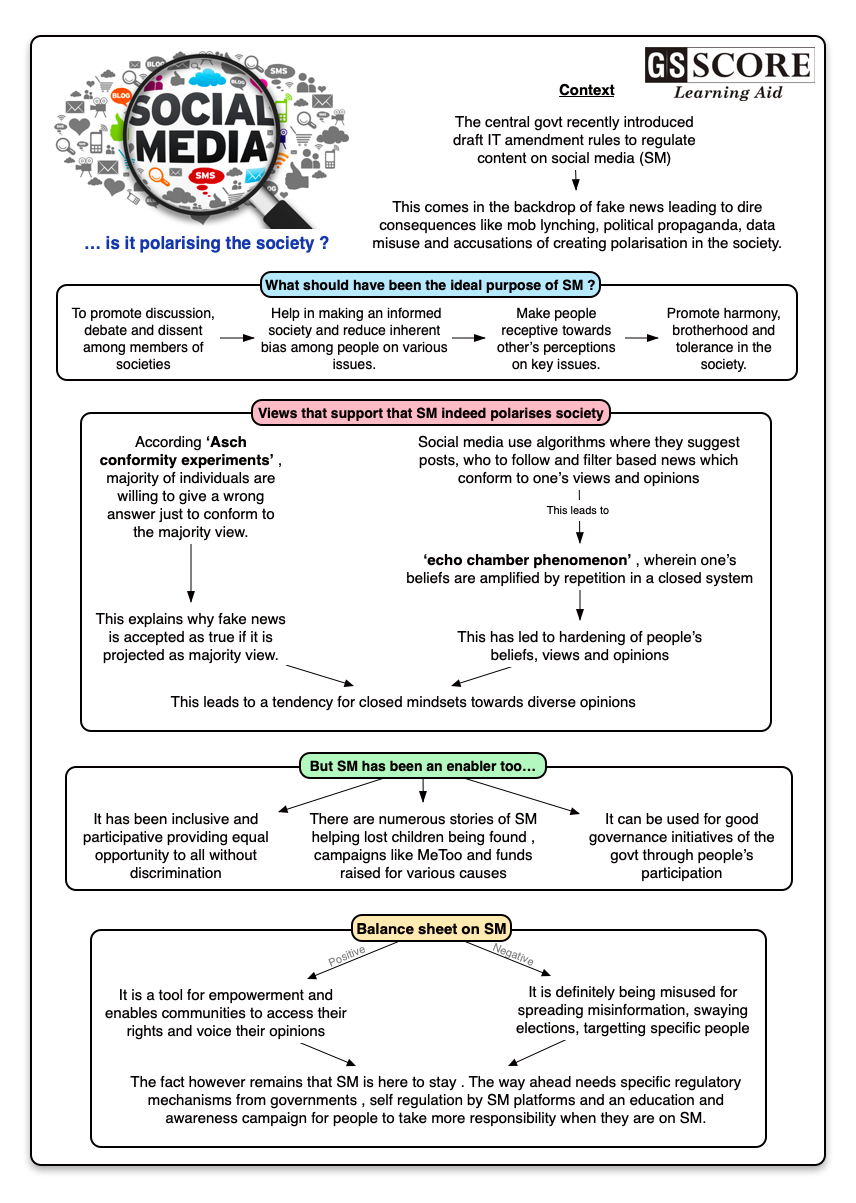

It is being said that social media is mainly responsible for the violent, regressive society of 2018. Social media was used to garner support for a man who burnt a Muslim man on video in Rajasthan.
It was also used to raise funds for the parents of a child who was gang-raped and murdered in Kathua in Jammu and Kashmir.
Issue
Context:
- It is being said that social media is mainly responsible for the violent, regressive society of 2018. Social media was used to garner support for a man who burnt a Muslim man on video in Rajasthan.
- It was also used to raise funds for the parents of a child who was gang-raped and murdered in Kathua in Jammu and Kashmir.
Background:
The presence of social media in our lives is highly complicated. While the birth of social media is based on the democratic principles of the Internet and its technological ability to be open and accessible to all, it has evolved to not only be inclusive and participative but also disruptive. The features of openness, obscurity and anonymity that once gave strength to marginalised communities are now giving room for malicious intentions to grow.
As we approach the end of the second decade of this century, social media and the Internet have drifted from their promise of closing distances and exposing us to the views of those who existed beyond our personal networks. We haven’t only become consumers of information but creators as well, which gives us a misplaced sense of control. However, it is now increasingly being blamed for breeding toxicity, promoting polarisation, amplifying disinformation, birthing malicious intentions and swaying elections.
About:
What is Social Media?
It is a computer-based technology that facilitates the sharing of ideas and information and the building of virtual networks and communities. By design, social media is internet based and offers users easy electronic communication of personal information and other content, such as videos and photos. Users engage with social media via computer, tablet or smartphone via web-based software or web application, often utilizing it for messaging.
Users of social media:
Individuals- To keep in touch with friends and extended family, network for career opportunities, find people from all over the globe who share a common interest, share content and more.
Businesses- It is an indispensable tool for finding and engaging with customers, sales, advertising and promotion, gauging trends and offering customer service.
Governments and politicians-To engage with constituents and voters.
Analysis
How much time do we spend on Social Media?
Globally, on average 1.49 billion people log onto Facebook daily; every second around 6,000 tweets are tweeted on Twitter; and since its inception, over 40 billion photographs have been posted on Instagram.
In India, social media platforms have reached over 200 million people which makes India the second most populated country on the Internet, paradoxically, India also has the highest number of unconnected individuals since only about 30% of the country’s population has experienced the Internet so far. India is now WhatsApp’s biggest market, with approximately 250 million monthly users.
As a positive force:
- Tool for empowerment and an enabler:
It has enabled millions of people and communities to access their rights and voice their opinions. It has given thousands of artists an opportunity to showcase their art to a global audience, and given a platform to hundreds for news and other content. It has even provided citizens and governments a platform where they can engage in dialogue.
- Platform for free speech:
- Facebook is being blamed for fuelling the ‘yellow vests’ unrest in France. Facebook Live videos, local events and constant updates turned unorganised outpouring into a national-level protest. But to blame social media for the unrest is as senseless as blaming pamphlets for the French Revolution.
- These platforms are designed to show you more of what you already engage with and thus increase your bias. While newer algorithms and artificial intelligence are being used to spot and stop fake news, the debate will continue about free speech. What is parody, what is humour and what is hate speech? Machine learning is in its infancy and we are a few years away from algorithms that can fight the evils of humanity.
- As transforming force to India:
- Over 80% households have access to mobile phones and approximately 300 million Indians use smartphones. Bank account penetration has surged due to the Pradhan Mantri Jan-Dhan Yojana.
- About 1.1 billion Indians have a unique digital identity, Aadhaar. India has a large and low-cost set-up for electronic payments in place, including wallets, new payments banks and Unified Payments Interface (UPI). National Payments Corp. of India (NPCI) processed 246 million digital payment transactions on its UPI platform in June 2018.
- Only a medium:
- Technology has always been blamed. The printing press was seen as trouble. The speed at which books could be printed and distributed aroused suspicion. Books were only a medium, just like social media. Banning books and blaming social media are results of the same flawed logic.
- If social media had an inherent bias towards evil, there would have been no #MeToo stories. There are many stories of lost children being found, dogs being adopted, and money being raised for various causes on social media.
- For many social media is divisive, but television is not. Due to the content is supposedly more controlled while everyone is a content creator on social media. According to the BI-2018 survey, the number of individuals with access to TV has gone up to 835 million; smartphone penetration in the country is at around 300 million. The number of daily active users on WhatsApp is 200 million; on Facebook it is 194 million; and on Twitter it is 7.83 million. By all accounts, social media in India is still a niche phenomenon.
Negative Impact:
- Fake news:
- Its rise corresponds with a growing distrust in the mainstream media. Fake news has now even slipped into traditional media outlets and is often circulated by prominent individuals. This has contributed to the echo chamber phenomenon. People seek “informed” opinions through filters only from people they trust and look for news that confirms their world view. This results in people cultivating rigid opinions of issues that they would have probably been more willing to discuss in the past.
- During 1950s, social psychologist Solomon Asch conducted a series of psychological experiments called the Asch Conformity Experiments to determine the extent to which a person’s opinion is influenced by a group. Although means of communication and engagement have evolved since the 1950s, the human instinct to fit in hasn’t changed. To some extent this also explains the impact of fake news online, which is said to contribute to a polarised society.
- Narcissistic impulses:
Social media sites are more than willing to play abettors. Twitter, for example, will routinely prompt you to follow people who hold a viewpoint that is similar to yours. Social media creates and services needs, which could be the narcissistic impulses encouraged by Instagram or the strengthening of deep-rooted biases on Twitter and Facebook.
- Not open to diverse Opinions:
As per a study carried out by Aalto University, Finland, on increasing polarisation on social media found that factors like user homophily (users in a social system tend to bond more with ones who are similar to them than to ones who are dissimilar) and algorithmic filtering have created this cycle of enforcing and reinforcing belief systems and ensuring that we don’t open our minds to diverse opinions. The study suggests that algorithms must be created to identify trigger topics and find diverse opinions that might otherwise be kept out.
Conclusion:
Despite all its evils, social media is a tool for expression, equality and empowerment, especially for a country like India where 70% of the population is yet to get online and leverage the opportunities it has to offer. While social media is definitely facing the global challenges of information bombardment (both factual and fake), it is also enabling communities to access their rights and voice their opinion. Hopefully, in times to come, people will learn to take more responsibility for what they share and social media platforms will regain their lost trust.
Learning Aid
Practice Question:
Discuss the Impact of Digital/Social media on Society. Is social media polarising society?

